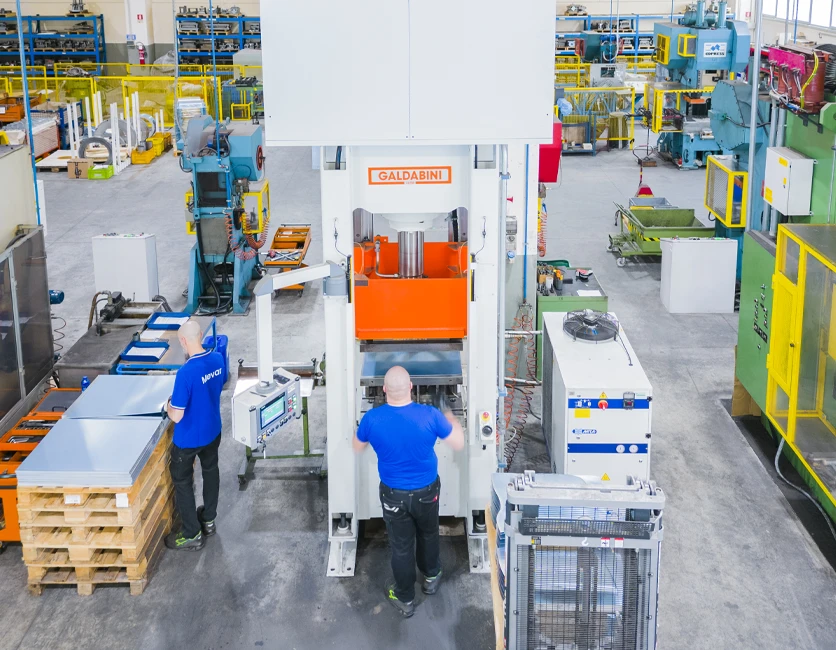
Sheet metal machining - Moulding - Intro
Moulding is an operation that allows metals to be permanently deformed, starting from coils (tape) or sheet metal. At Mevar, thanks to laser cutting technology, we can obtain developed plans such as discs, squares or any shape suitable to be processed with moulding, minimizing waste and reducing costs.

At Mevar we use different moulding techniques
By moulding, we can obtain multiple deformations such as:
Our presses (mechanical and hydraulic), equipped with moulds, transfer the pressure on the sheet deformating it. The pressure varies depending on the tonnage of the machine, the thickness and the kind of processing that has to be impressed to the particular.
The precision and quality of our moulding techniques are guaranteed by production controls and periodic maintenance after each processing
Our presses (mechanical and hydraulic), equipped with moulds, transfer the pressure on the sheet deformating it. The pressure varies depending on the tonnage of the machine, the thickness and the kind of processing that has to be impressed to the particular.
The precision and quality of our moulding techniques are guaranteed by production controls and periodic maintenance after each processing
Single and continuous stroke presses
Presses, both mechanical and hydraulic, can be single or continuous stroke.
In the first case, the press repeats the process following a command given by the operator at the end of the previous cycle.
In the second case the press is equipped with an automatic mechanism that allows to drag and straighten the coil, independently controlling the continuous moulding.
For every need related to cold forming, our Technical Office will evaluate with the customer the best solution among the different processes that we are able to implement.
In the first case, the press repeats the process following a command given by the operator at the end of the previous cycle.
In the second case the press is equipped with an automatic mechanism that allows to drag and straighten the coil, independently controlling the continuous moulding.
For every need related to cold forming, our Technical Office will evaluate with the customer the best solution among the different processes that we are able to implement.




